The weekly COVID-19 wastewater numbers for Saskatoon, Prince Albert and North Battleford have been released, seeing decreases in the viral load everywhere except Saskatoon.

Saskatoon saw its first increase after three successive decreases, with the viral RNA load increasing 148.8 per cent for the reporting period up to Dec. 7.
The report from the University of Saskatchewan and Global Water Futures researchers considers the concentration of viral particles medium.
It adds that the increase in the RNA load indicates an increase in COVID-19 infections in the city.
The majority of the RNA load was attributed to other Omicron variants, which made up 72.6 per cent. The BA.5 variant made up 9.1 per cent, and BA.2.75 made up 18.3 per cent.
Dr. John Giesy with the University of Saskatchewan said Saskatoon often gives a glimpse of what Prince Albert and North Battleford will see in future reports.
“Saskatoon always leads P.A. and the Battlefords by about a week to a week and a half,” Giesy said.
He said he wasn’t certain about the reason why, but suggested it had to do with the traffic through the city or perhaps the size of the city.
Prince Albert recorded a 50.7 per cent drop in the RNA load found in its wastewater for the reporting period up to Dec. 5.
The report considered this a medium concentration of viral particles.
It added that the drop in the RNA load indicates a drop in COVID-19 infections in the city.

Get weekly health news
The BA.5 variant made up nine per cent of the RNA load, with 1.1 per cent being attributed to BA.4, and the remaining 89.9 per cent being labelled as other Omicron variants.
Giesy said much of the other Omicron noted in all the samples is being identified as the BQ.1 variants.
“It’s mostly BQ.1 and BQ.1.1 based off our sequencing. And we send samples off to the public health agency of Canada and they check all that, and then we get data from them about two to three weeks later.”
North Battleford saw a 64.9 per cent decrease in its RNA load for the reporting period up to Dec. 2.
The report noted that this was considered a medium concentration of viral particles, and that the decrease indicated a decrease in infections.
The BA.5 variant made up 9.1 per cent of the RNA load and the remaining 90.9 per cent was attributed to other Omicron variants.
Giesy said another peak is expected over the holiday season but that doesn’t mean people should not get together.
“We seem to be seeing less Illness from people being infected. Why that is, we’re not sure. It’s probably a combination of having people been infected and having some immunity from vaccinations. And the virus seems to be moderating to a point where it’s not killing people like it once did,” Giesy added.
- ‘We do not give in to terror’: Canadians voice support for Sydney Hanukkah shooting victims
- Winter storms, rain and snow wallopping Canada. Here’s where you’ll see it
- ‘Really challenging issue’: Many B.C. communities still at high risk for flooding
- Cold warnings across the Prairies forecast wind-chill temperatures near -45 C



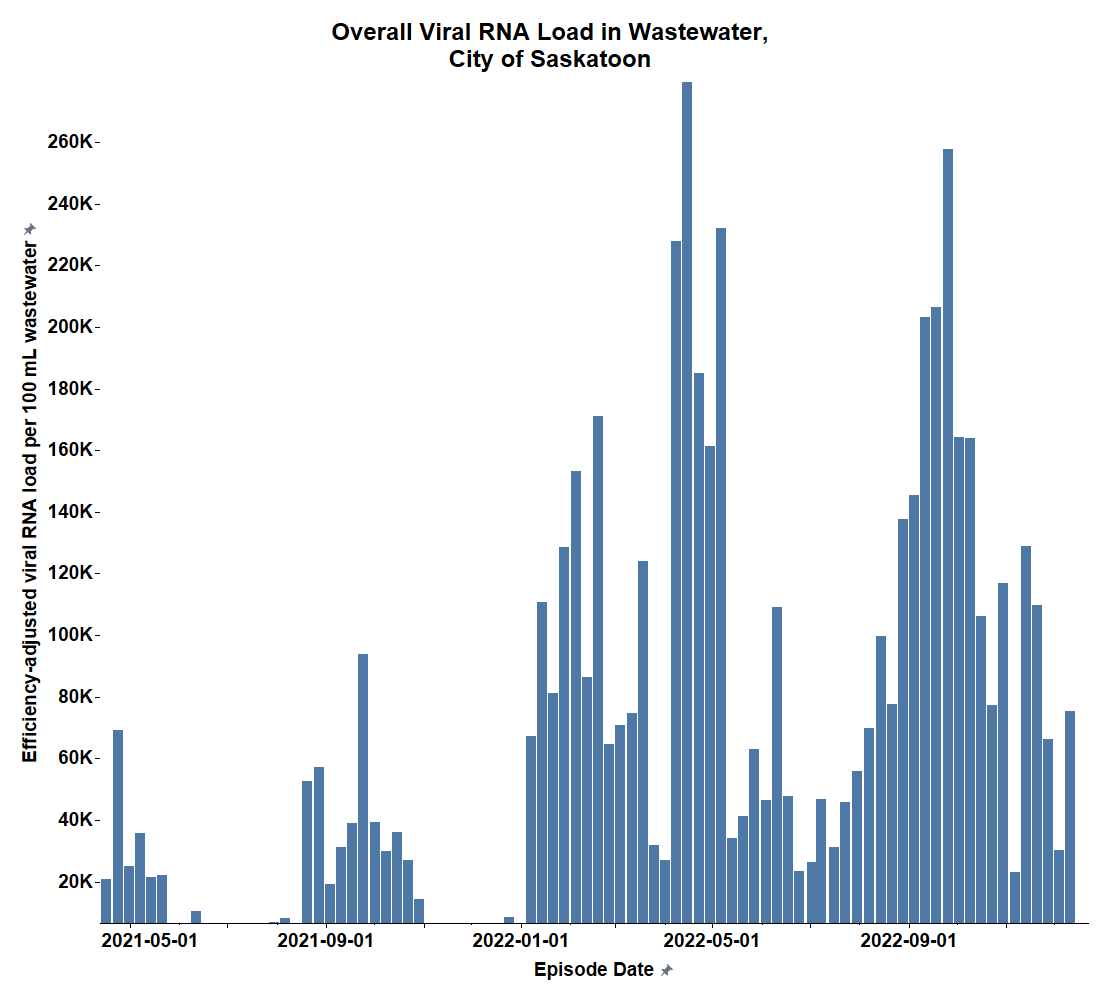
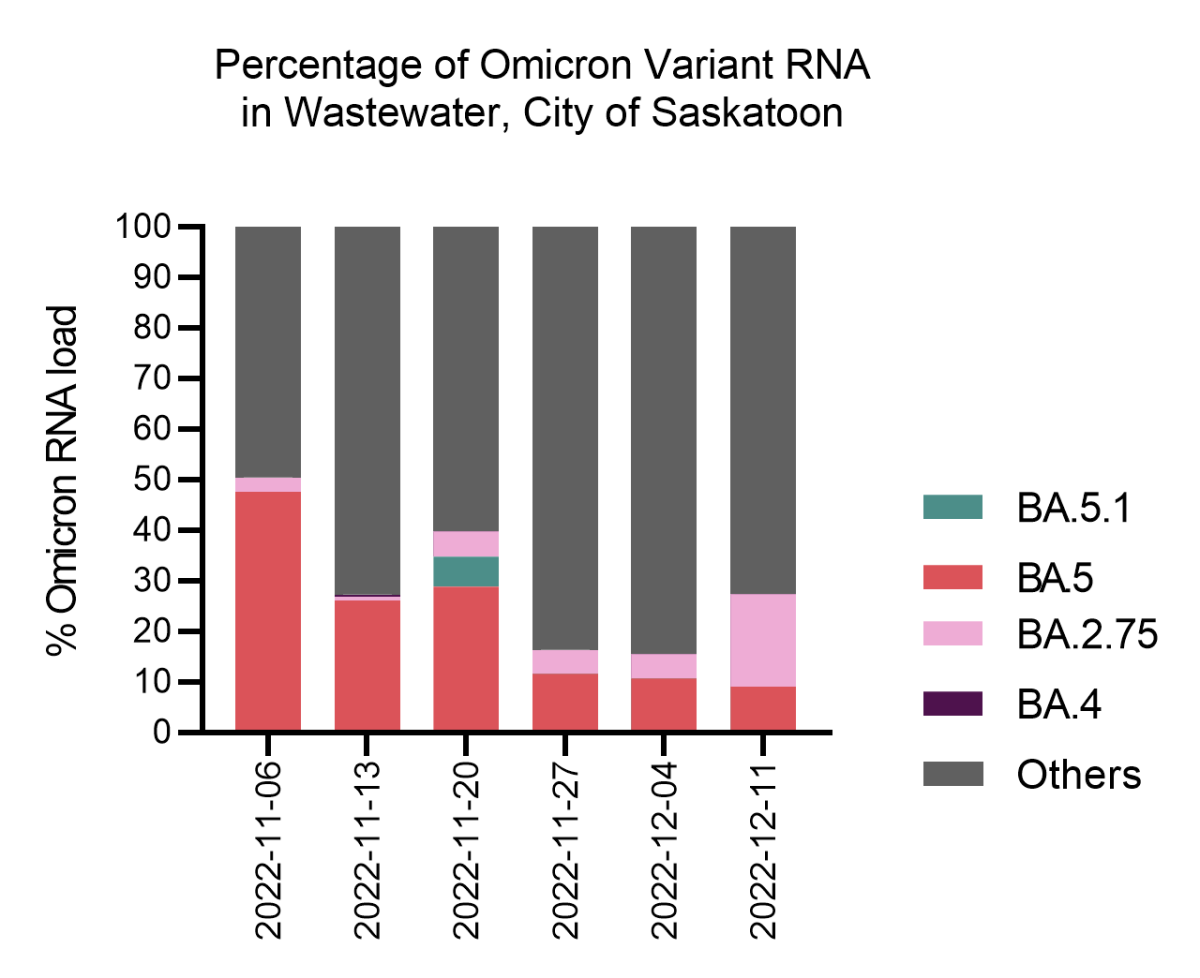

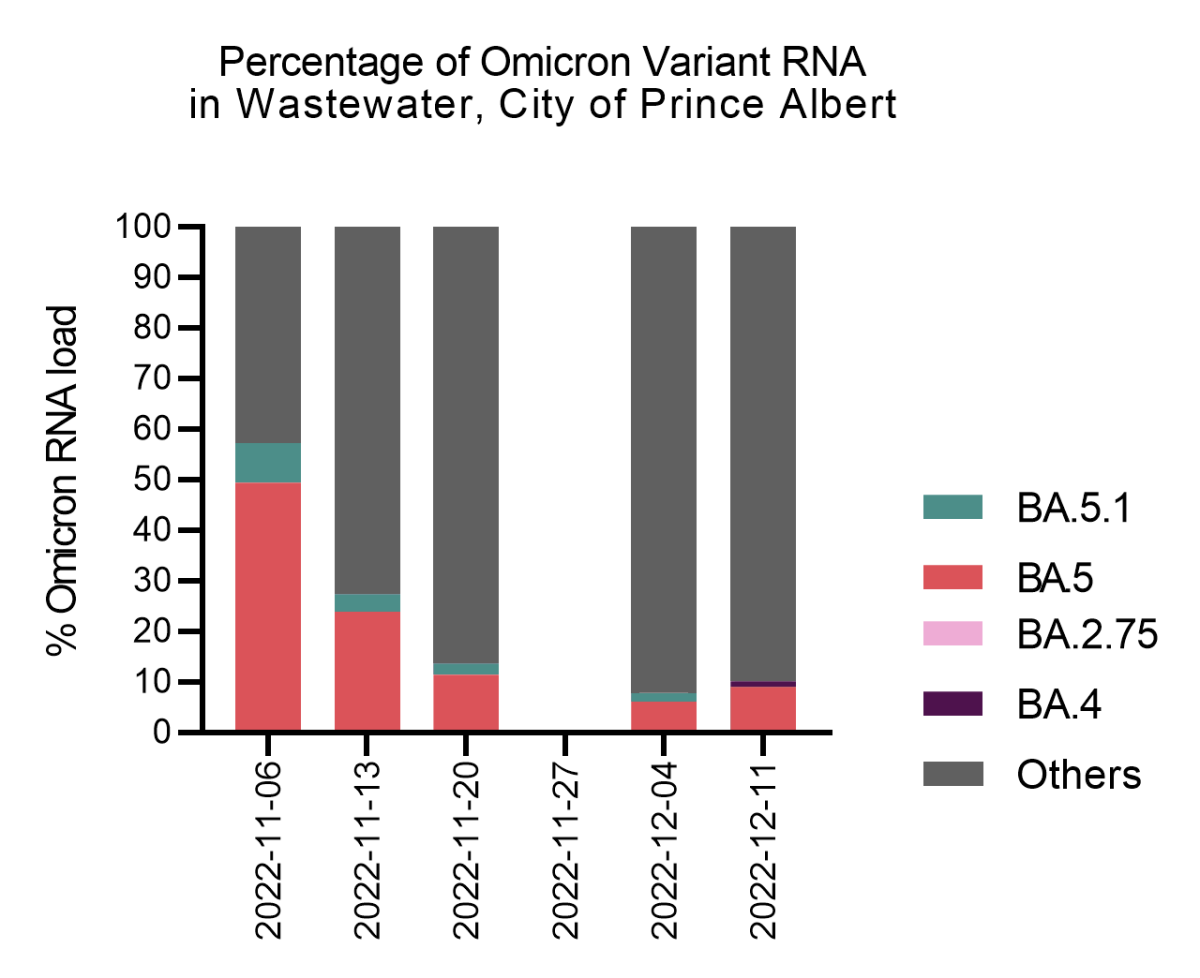


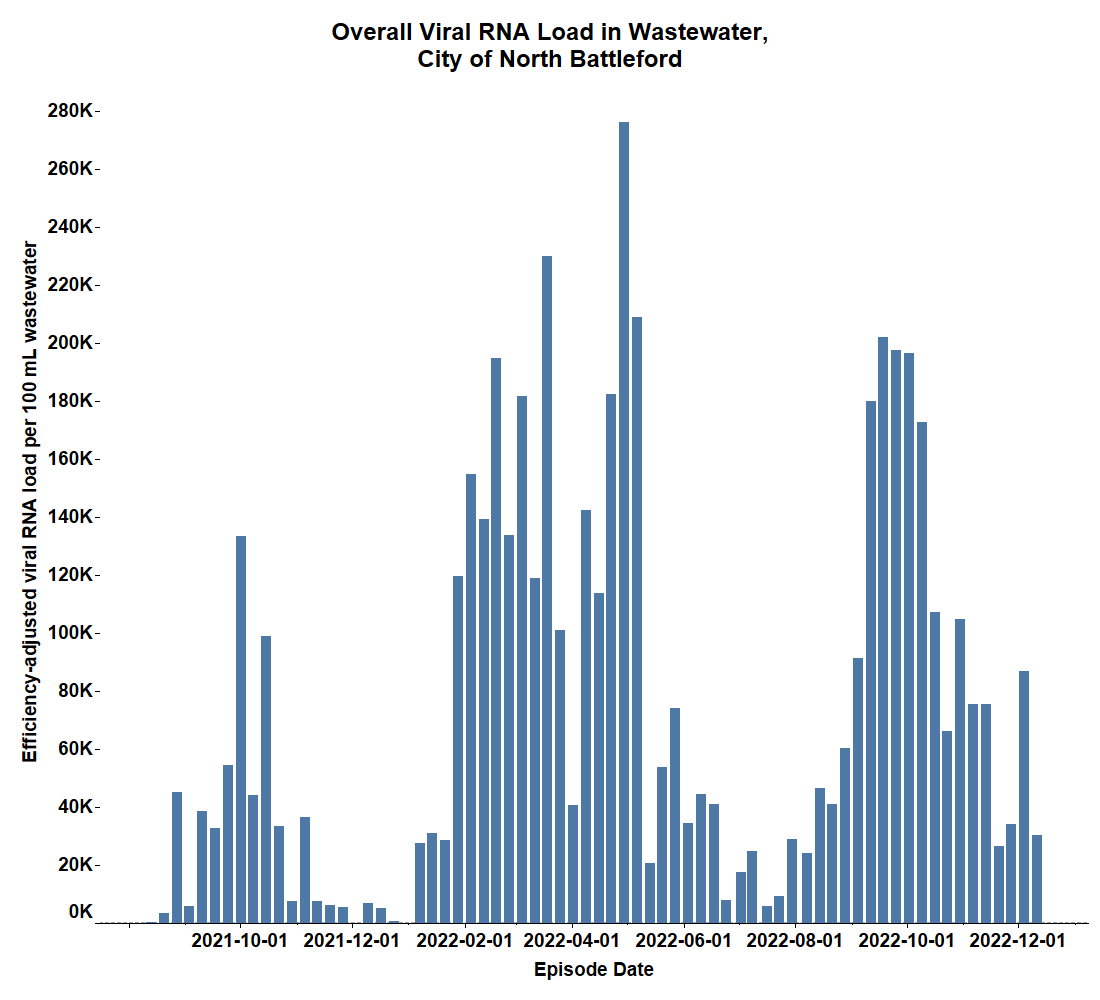
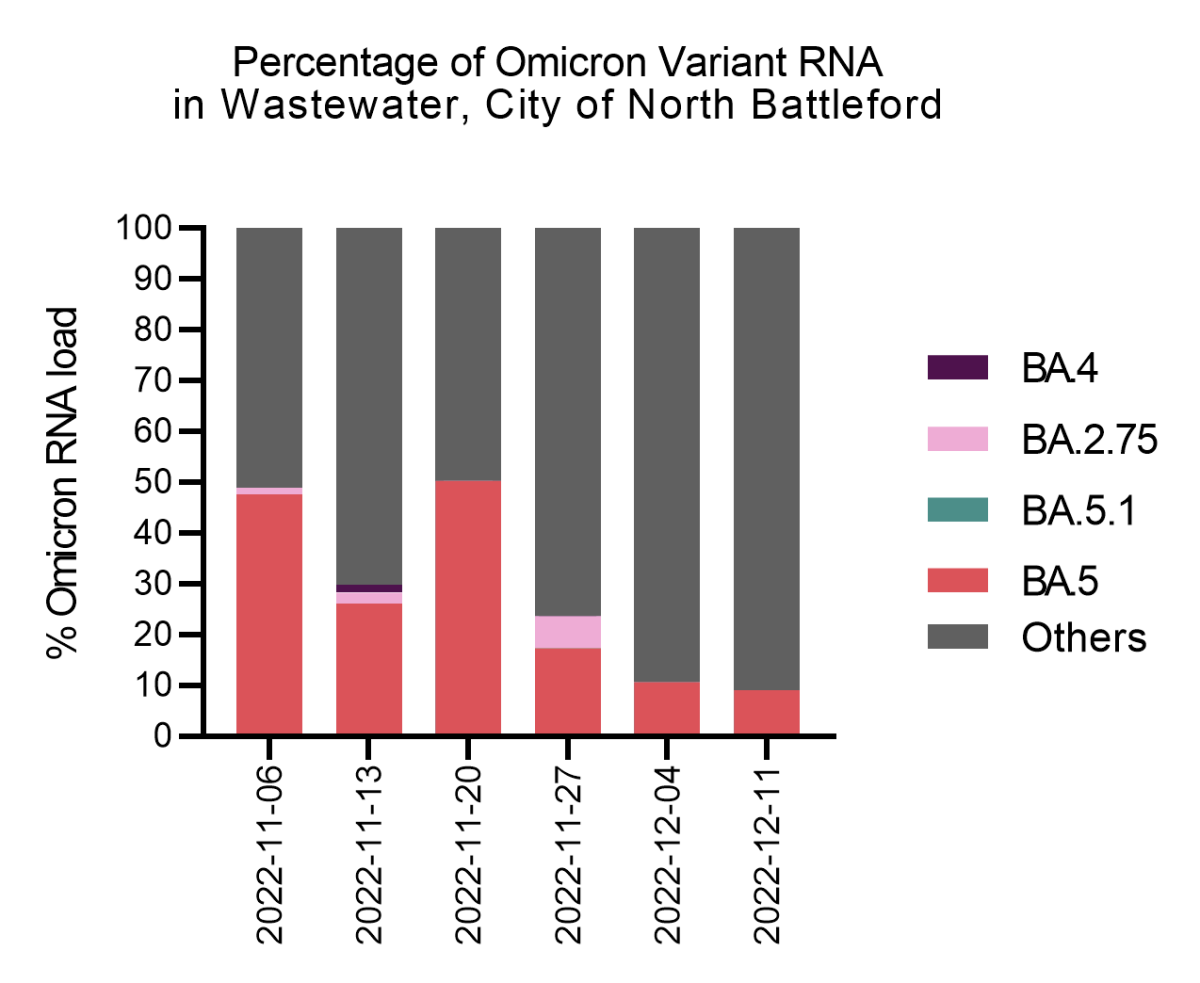







Comments